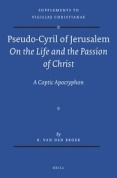 In the early seventies of the last century I became acquainted with the homily On the Life and the Passion of Christ, contained in manuscript M610 of the Pierpont Morgan Library, New York, and attributed to Cyril of Jerusalem. It is an interesting text, in particular because of its many apocryphal stories. The work was accessible only in Hyvernat’s facsimile edition of the Pierpont Morgan Coptic codices, vol. 44, and I decided to ask the authorities of the Library to grant me permission to publish the text, with an introduction, translation and notes. I got the permission and began to work on the edition and announced its publication to the scholarly world. But then my career and my research took another direction and I had to leave the project unfinished for several decades. In 2010 I took up the work again and brought it to completion in the spring of 2012.
In the early seventies of the last century I became acquainted with the homily On the Life and the Passion of Christ, contained in manuscript M610 of the Pierpont Morgan Library, New York, and attributed to Cyril of Jerusalem. It is an interesting text, in particular because of its many apocryphal stories. The work was accessible only in Hyvernat’s facsimile edition of the Pierpont Morgan Coptic codices, vol. 44, and I decided to ask the authorities of the Library to grant me permission to publish the text, with an introduction, translation and notes. I got the permission and began to work on the edition and announced its publication to the scholarly world. But then my career and my research took another direction and I had to leave the project unfinished for several decades. In 2010 I took up the work again and brought it to completion in the spring of 2012.
Some poor remains of another copy of Pseudo-Cyril’s homily have been preserved in Ms. E16262 of the University of Pennsylvania, as the underwriting of a palimpsest of which the overwriting contains parts of the homily On the Resurrection of Lazarus, attributed to Athanasius of Alexandria. Of the six pages of E16262 only four contain a part of Pseudo-Cyril’s text, but because of the overwriting and the bad state of the manuscript, only a few portions are legible. In my edition all indubitable variant readings of E 16262 have been recorded in the critical apparatus.
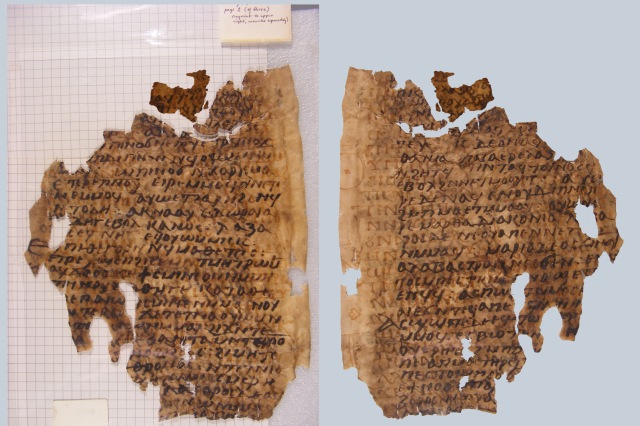 University of Pennsylvania Museum, E 16262 (SOURCE OF THE PHOTOGRAPH)
University of Pennsylvania Museum, E 16262 (SOURCE OF THE PHOTOGRAPH)
In my view, the edition and translation of a Coptic text is complete only if it is accompanied by a thorough commentary which clarifies the content of the text and puts it into a wider context. I have tried to do this in the long introduction and the notes to the translation.
The introduction encompasses three chapters. Chapter I deals with the two manuscripts. Chapter II discusses the most important apocryphal stories which Pseudo-Cyril has to offer: the discovery of ancient ‘Writings of the Apostles’, a list of the apostles with their worldly professions, a Pilate apocryphon, an unfamiliar chronology of Holy Week (Jesus arrested on Tuesday evening), stories about Jesus divine body and his physical appearance, the dreams of Pilate and Procla, etc. I have been able to trace the background of most of these apocryphal data, with the exception of the tradition that Moses killed the Egyptian with a papyrus scroll, the contents of the dreams of Pilate and Procla, and the story that Pilate and Jesus had a meal together on Thursday evening. On the basis of the occurrence of these apocryphal elements in other Coptic and Byzantine texts, it becomes clear that Pseudo-Cyril’s homily might had been written in the latter half of the eighth century, but that its composition in the first half of the ninth century seems more reasonable.
The third chapter of the Introduction deals with the relationship between On the Life and the Passion of Christ and the other seven Coptic homilies which are explicitly attributed to Cyril of Jerusalem. These homilies are analyzed and an attempt is made to put an end to the confusion with respect their titles (for instance, On New Sunday is often called On the Passion II, whereas the homily does not mention the Passion at all). The unmistakable relationship between some of the homilies is discussed, the conclusion being that the thesis of a whole cycle of Cyrillian homilies, produced by a homogenous literary school, is built on rather shaky grounds.
The book concludes with two appendices and three indexes (Graeco-Coptic words, sources, and names and subjects). The first appendix contains one Greek and two Coptic texts on the worldly professions of the apostles. The second appendix presents an English translation of Epiphanius’ Letter on the Chronology of Holy Week, the Greek text of which was published by Karl Holl in 1927.
With thanks to Alin Suciu for asking me to present my book on his blog, I may use this opportunity to announce another book of mine, which will be of interest to Coptologists who are engaged in the study of Coptic gnostic texts: Gnostic Religion in Antiquity, Cambridge University Press, 2013; 255 pp., Price ₤ 55,-
Roelof van den Broek









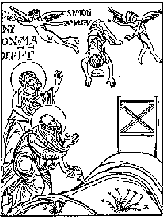




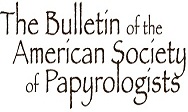
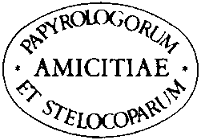
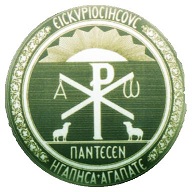





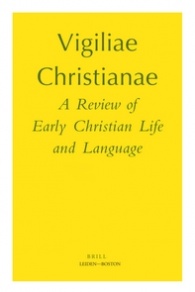






Pingback: Un manuscris antic prezinta informatii surprinzatoare despre Iisus. Ce spune istoricul Alin Suciu | HotNews
Pingback: Jesus als Formwandler und das Abendmahl mit Pontius Pilatus | Der Almane vom Stamm der Sachsen
Pingback: Shape-Shifting Jesus: On the Sins of Marketers and Media | PaleoBabble
Jesus was captured on Tuesday, died on Wednesday afternoon, Thursday high Sabbath, Friday the Mary`s bought spices and on Sabbath afternoon Jesus was resurrected (3days and 3 nights) Jesus was already resurrected on Sunday morning. Not a Friday/Sunday period. One question which Thursday did Pilatus and Jesus had dinner together? Doesn`t make sense in timeline.
Pingback: Shape-Shifting Jesus: On the Sins of Marketers and Media | Filter_paleo
Pingback: Jesus Was a Shapeshifter According to Ancient Egyptian Texts | BEYONDSCIENCETV
Pingback: El texto antiguo que describe a Jesús como un cambiaformas | maestroviejo